Bells at the OSM
For several years, the Orchestre symphonique de Montréal had been toying with the idea of adding bells to its percussion section. The team approached patron Roger Dubois, president of Groupe Canimex and a long-standing partner, who generously agreed to acquire a set of fifteen bells for use by the OSM.
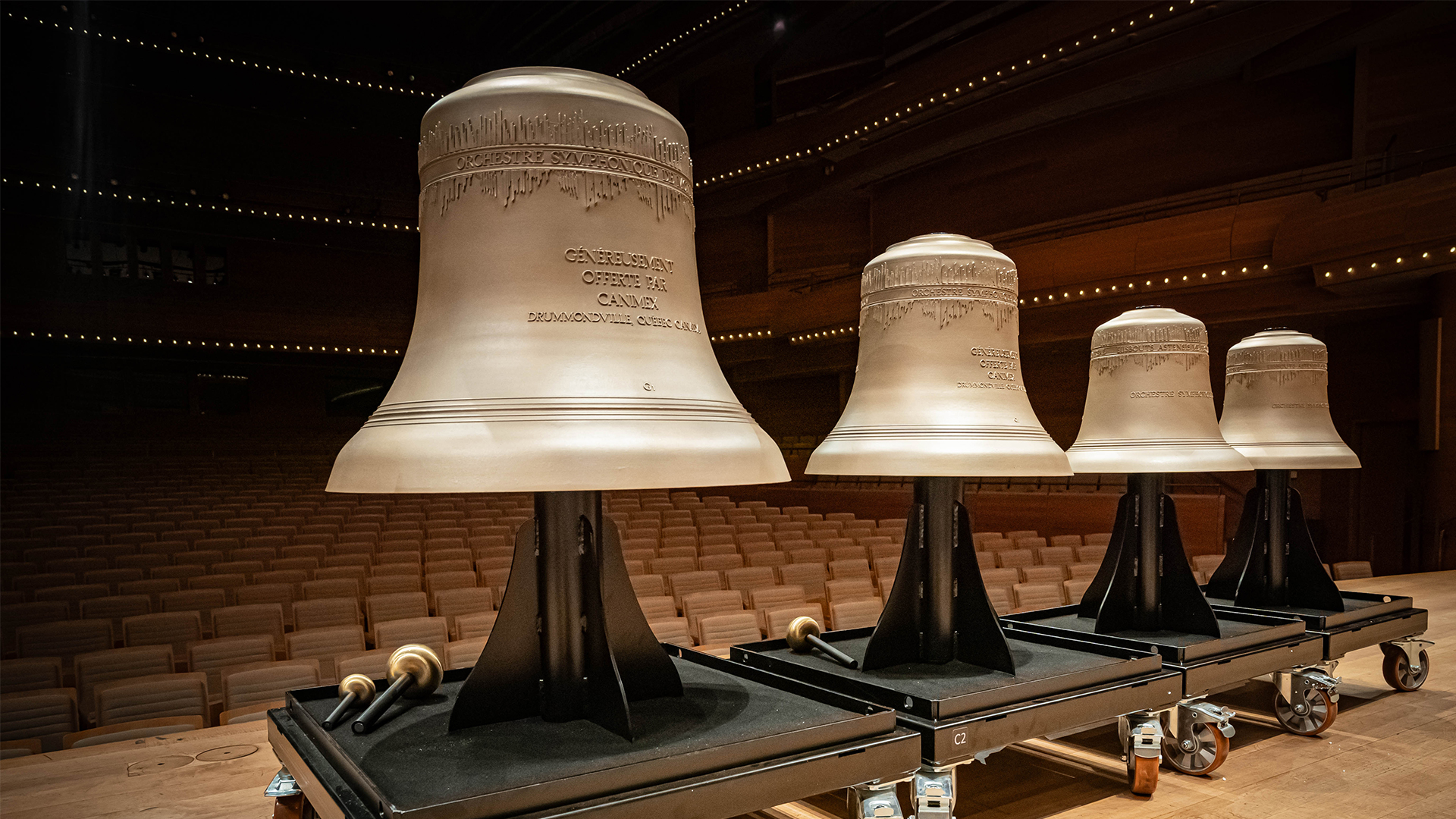

Mélanie La Couture, Cheffe de la direction – Sébastien Almon, Directeur opérations artistiques et développement international – Rafael Payare, Directeur musical – Roger Dubois, Président du Groupe Canimex – Serge Desgagnés, percussions solo © Antoine saito
A brief history
For the past several years, the Orchestre symphonique de Montréal has nurtured the project of outfitting its percussion section with bells. Its team therefore approached patron Roger Dubois, the President of Groupe Canimex and a longstanding partner of the Orchestra, who generously agreed to acquire a set of fifteen bells reserved for use by the OSM. Many orchestras are equipped with bells—in Berlin, Paris, New York, Boston, Amsterdam, and Cleveland, among others. The symphonic repertoire comprises several works that call for carillon bells, and when orchestras do not have them available, they will often use tubular bells instead. The OSM is pleased to now have all ten of its carillon bells, with the first four received in June 2024, six more were added in November 2024 and the last five arrived in December 2025.
A word from Rafael
Carillon bells for the OSM
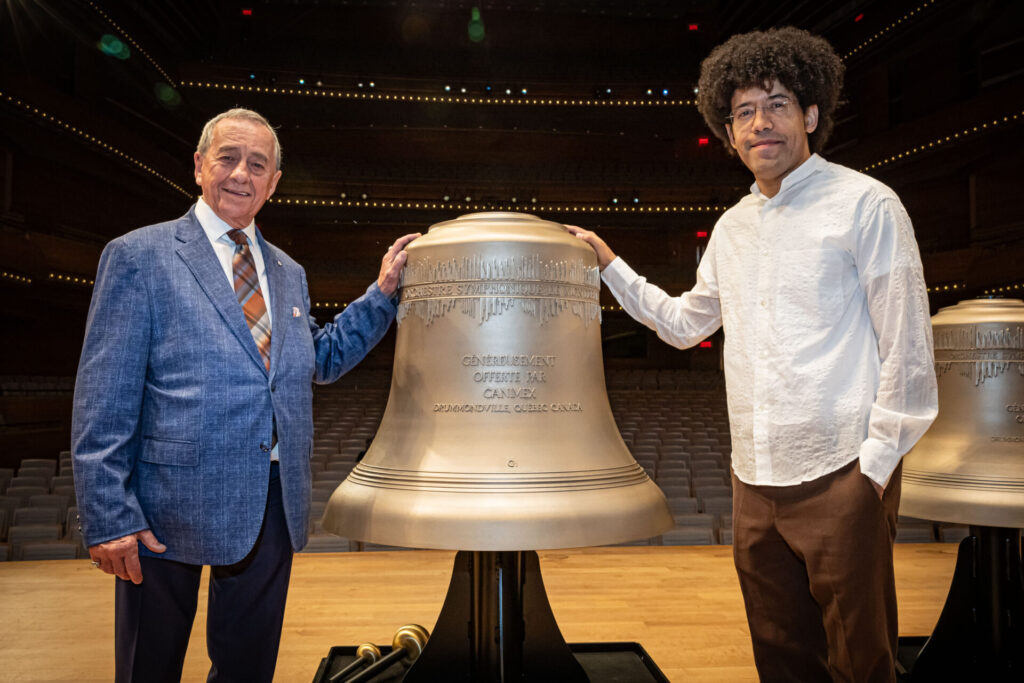
One will usually do!
A few bells are often all that is needed to augment a performance: two (G and C) for Berlioz’s Symphonie fantastique, one (E♭) for “The Great Gate of Kyiv” in Mussorgsky’s Pictures at an Exhibition, and three (F♯, A, and B) for Mahler’s Ninth Symphony, for example. The OSM’s first two bells, tuned to G and C, were heard for the first time at the Maison symphonique on September 18 and 19, 2024, in performances of Hector Berlioz’s Symphonie fantastique, as well as in its World Premiere of an OSM commission La Chapelle to composer Michael Oesterle, conducted by Rafael Payare.
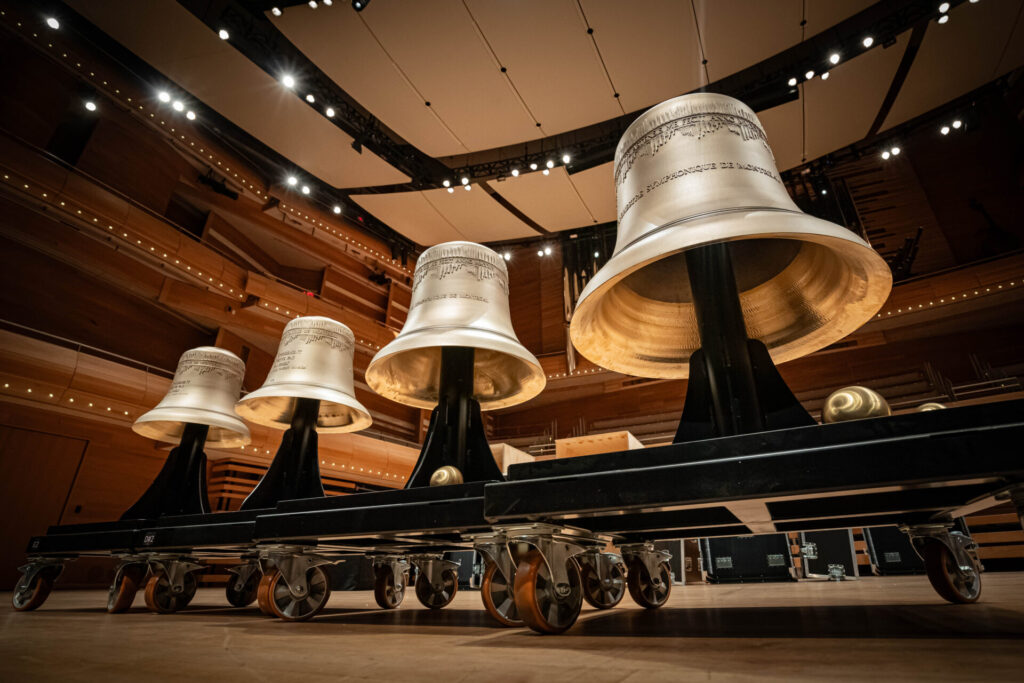
Choosing a foundry
Serge Desgagnés, principal percussionist of the OSM since 1997, was appointed as the orchestral carillonneur. Tasked by the OSM with evaluating the world’s leading foundries, he led a rigorous selection process that resulted in choosing the Royal Eijsbouts Foundry in the Netherlands. Established in 1872, the company initially gained renown casting bells for the Royal Concertgebouw Orchestra before building an international clientele among major orchestras.
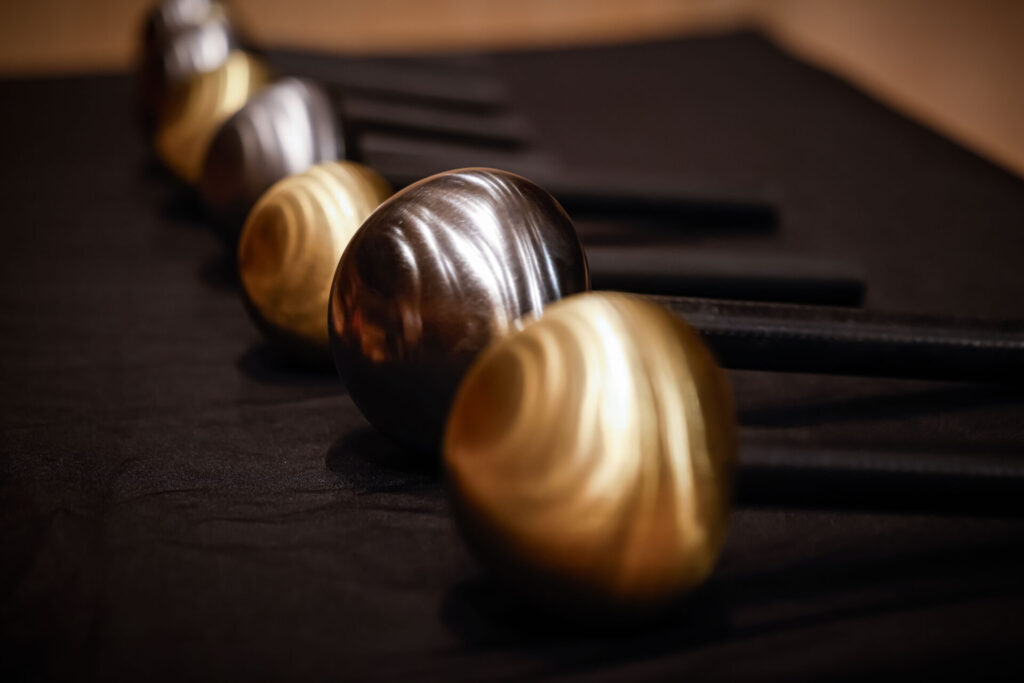
The finesse of bell sounds
Carillon bells are very much like the bells installed in church towers and civic buildings, but they are devoid of clappers inside. They are placed on special stands, and the percussionist produces their sound by striking them with metal mallets, with varying degrees of force. The bells are designed to emit a very specific pitch, and they blend subtly with the Orchestra.
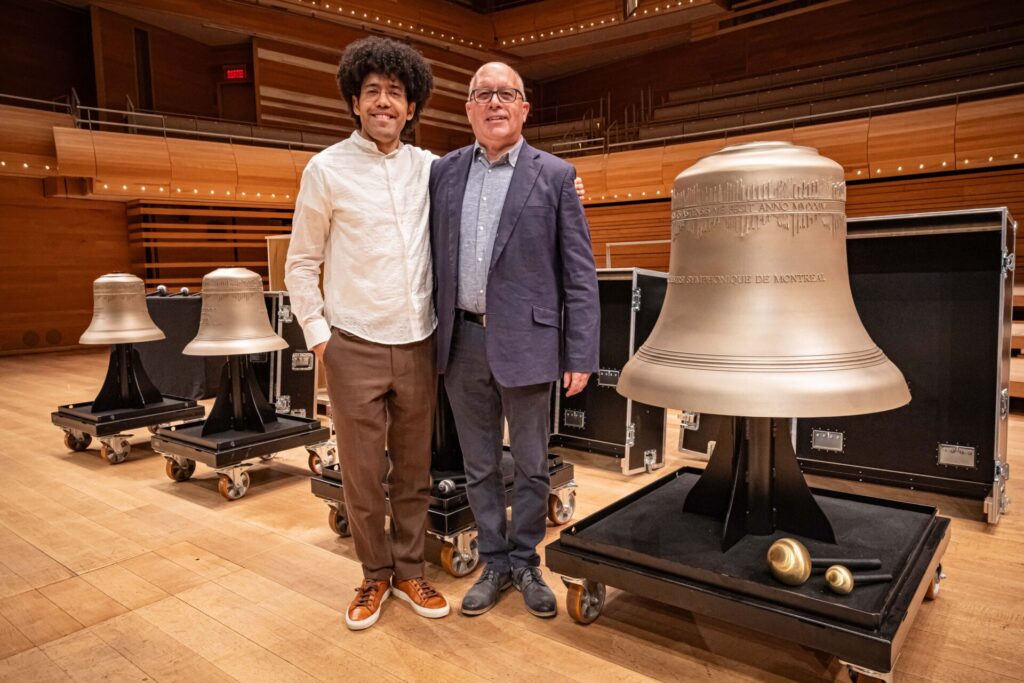
Maximum effect
Some scores—such as Berlioz’s Symphonie fantastique—contain only a few notes assigned to bells, but the effect is well worth the effort! That’s why, in November of 2024, the OSM toured Europe with two of its bells (G and C) in tow, adding 451 kilos to its total luggage weight. This meant some extra precautions and exertions for just a few bars of music, but the effect was astounding!
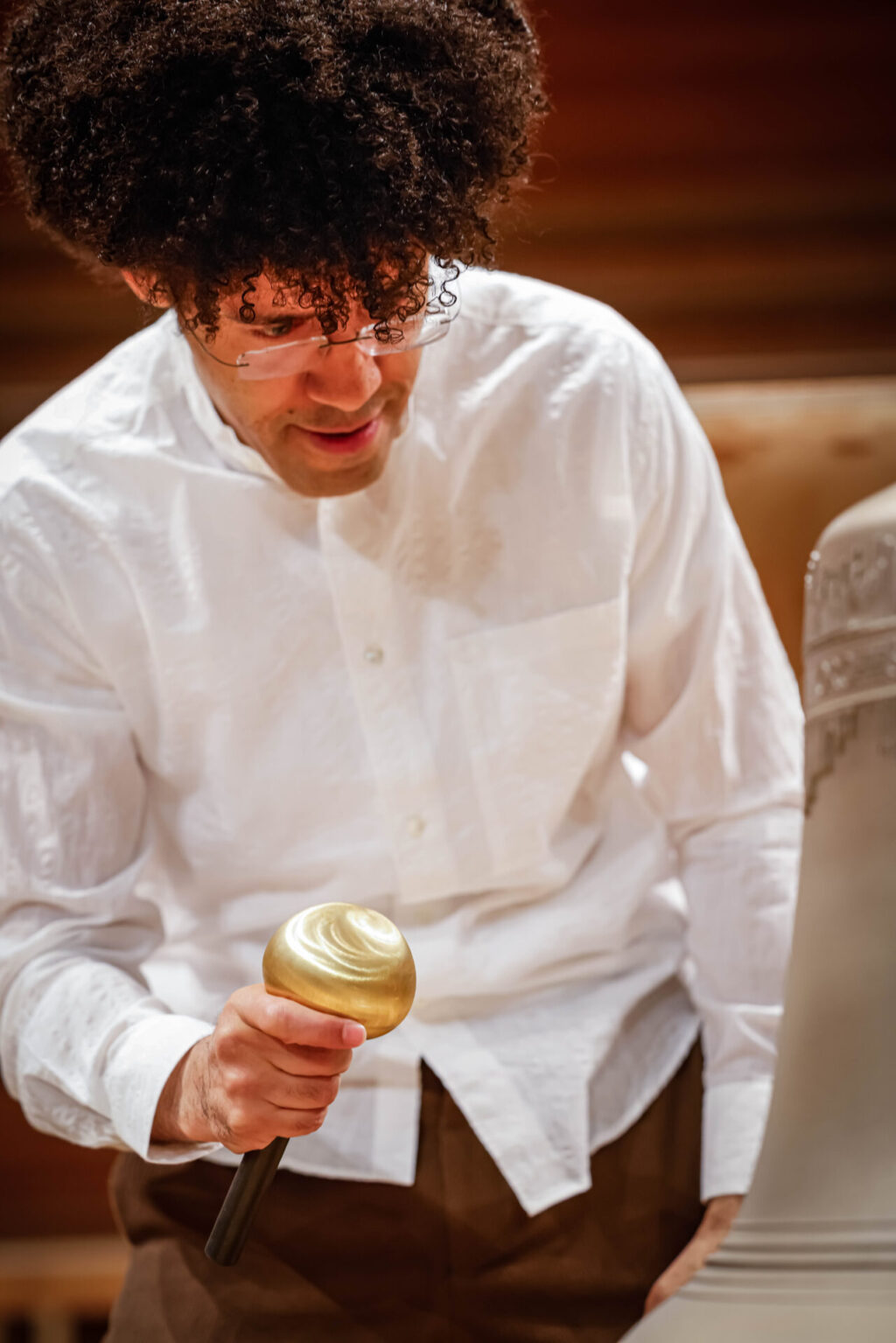
Use of the bells
- Commissioning a special work featuring the bells;
- In concert programs of various formats;
- Concerts with an educational component;
- Mediation activities (percussion workshops) with elementary and high school students;
- Exhibition of the bells in the foyers of the Maison symphonique at concert times.
Technical specifications
| Note | Weight (kg) | Diam (mm) |
|---|---|---|
| Low F♯ | 384 | 901 |
| Low G | 323 | 850 |
| Low A | 232 | 757 |
| Low A# | 192 | 715 |
| Low B | 152 | 675 |
| Middle C | 128 | 637 |
| Middle D | 96 | 567 |
| Middle D♯ | 80 | 535 |
| Middle E | 66 | 505 |
| Middle F | 54 | 477 |
| Middle G | 40 | 425 |
| Middle A | 29 | 379 |
| Middle A♯ | 24 | 357 |
| Middle B | 20 | 337 |
| High C | 20 | 331 |
Materials: all the bells are cast in bronze, i.e., 20% tin and 80% copper.
